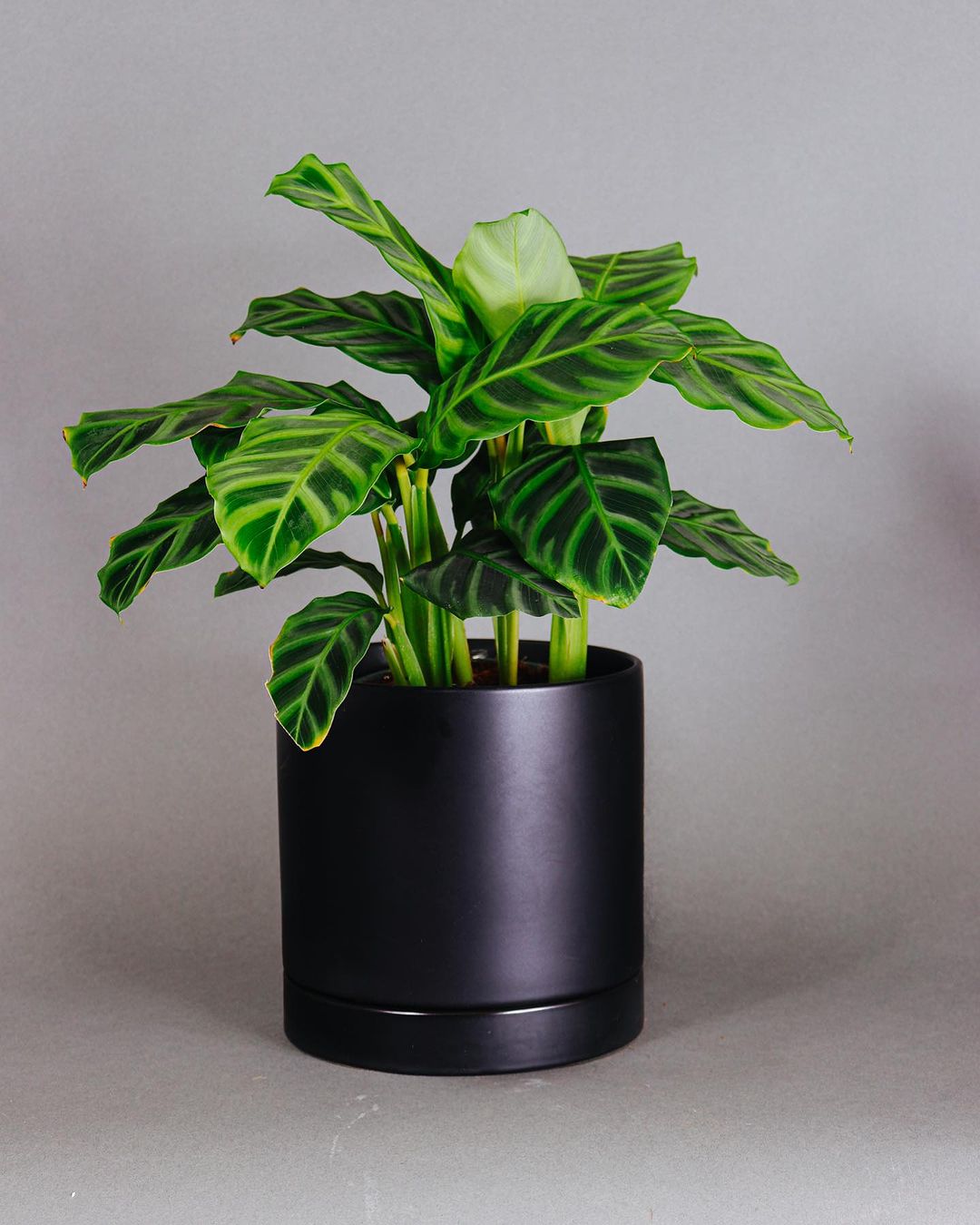Unlock the secrets to cultivating a thriving Zebra Plant (Calathea zebrina) with this comprehensive care guide. Learn about the ideal water, light, and nutrient requirements for this stunning tropical beauty, ensuring it remains a vibrant and eye-catching addition to your home or office space.
Among the vast array of tropical plants, the Zebra Plant (Calathea zebrina) stands out as a true showstopper. With its large, oval-shaped leaves adorned with striking patterns reminiscent of a zebra’s stripes, this plant is a feast for the eyes. Native to the rainforests of Brazil, the Zebra Plant has captivated plant enthusiasts worldwide with its unique and mesmerizing foliage.
Aside from its visual appeal, the Zebra Plant is also known for its ability to purify indoor air, making it a fantastic addition to any home or office space. However, to ensure this tropical beauty thrives, it’s essential to understand and meet its specific care requirements.
In this comprehensive guide, we’ll delve into the essential tips and tricks for cultivating a healthy and vibrant Zebra Plant, so you can enjoy its stunning foliage for years to come.

Water Requirements
Proper watering is crucial for the overall health and longevity of your Zebra Plant. Here are some essential guidelines for watering:
Soil Moisture: Before watering, check the soil moisture by sticking your finger into the potting mix. If the top inch or two feels dry, it’s time to water.
Watering Technique: When watering, thoroughly saturate the soil until water begins to drain from the bottom of the pot. Avoid getting water on the leaves, as this can promote fungal diseases.
Frequency: During the growing season (spring and summer), water your Zebra Plant when the top inch or two of soil is dry, typically every 5-7 days. In the winter months, reduce watering to once a week or when the soil is dry.
Humidity: The Zebra Plant thrives in high humidity environments. Mist the leaves regularly or place the pot on a pebble tray filled with water to increase humidity levels around the plant.
Light Requirements
The Zebra Plant prefers bright, indirect light, which is essential for maintaining its vibrant foliage and overall health. Here’s what you need to know about providing the right light conditions:
Ideal Light: Place your Zebra Plant near an east or north-facing window, where it will receive bright, filtered light throughout the day. Avoid direct sunlight, as it can scorch the leaves.
Low-Light Tolerance: While the Zebra Plant prefers bright, indirect light, it can tolerate lower light conditions, but its growth may become leggy, and its foliage may lose some of its vibrant patterns.
Signs of Insufficient Light: If your Zebra Plant is not receiving enough light, you may notice elongated stems, smaller leaves, and a loss of vibrancy in its foliage patterns.
Acclimation: If moving your plant from a low-light area to a brighter location, gradually increase its exposure to higher light levels to prevent leaf burn or stress.
Nutrient Requirements
To maintain its lush foliage and vibrant colors, the Zebra Plant benefits from regular fertilization. Here’s what you need to know about providing the right nutrients:
Fertilizer Type: Use a balanced, water-soluble fertilizer formulated for houseplants or foliage plants. Look for an N-P-K ratio of 10-10-10 or similar.
Frequency: During the growing season (spring and summer), fertilize your Zebra Plant every 4-6 weeks. Avoid fertilizing in the winter when the plant is semi-dormant.
Dilution: Follow the manufacturer’s instructions for dilution, as over-fertilizing can lead to salt buildup and potential root burn.
Flushing: Occasionally flush the soil with plain water to remove any accumulated salts or minerals from the potting mix.
Potting Mix and Repotting
Choosing the right potting mix and repotting your Zebra Plant at the appropriate time is essential for its overall health and vigor. Here are some tips:
Potting Mix: Use a well-draining, nutrient-rich potting mix specifically designed for tropical plants or houseplants. A mixture containing peat moss, perlite, and some compost or bark can provide the ideal balance of moisture retention and drainage.
Container: Choose a pot with excellent drainage holes to prevent waterlogged soil. Terra cotta or ceramic pots are ideal, as they allow for better air circulation and water evaporation.
Repotting: Repot your Zebra Plant every 2-3 years, or when it outgrows its current container. Gently remove the plant from its pot, trim off any dead or damaged roots, and replant in fresh potting mix.
Timing: The best time to repot is in the spring or early summer, just before the plant’s active growing season.
Grooming and Maintenance
Regular grooming and maintenance are essential to keep your Zebra Plant looking its best. Here are some tips:
Cleaning: Gently wipe the leaves with a damp cloth to remove any dust or debris, which can inhibit photosynthesis and dull the foliage patterns.
Pruning: Remove any dead or damaged leaves or stems to promote new growth and maintain the plant’s appearance.
Pest Control: Keep an eye out for common pests like mealybugs, spider mites, or scale insects, and treat promptly with an appropriate insecticidal soap or neem oil solution.
Humidity: Regularly mist the leaves or use a pebble tray to maintain high humidity levels around the plant, which it prefers.
With the right care and attention, your Zebra Plant will reward you with its striking foliage and vibrant patterns, adding a touch of tropical elegance to your indoor space. Enjoy the unique beauty of this captivating plant and let it purify the air while enhancing the ambiance of your home or office.



